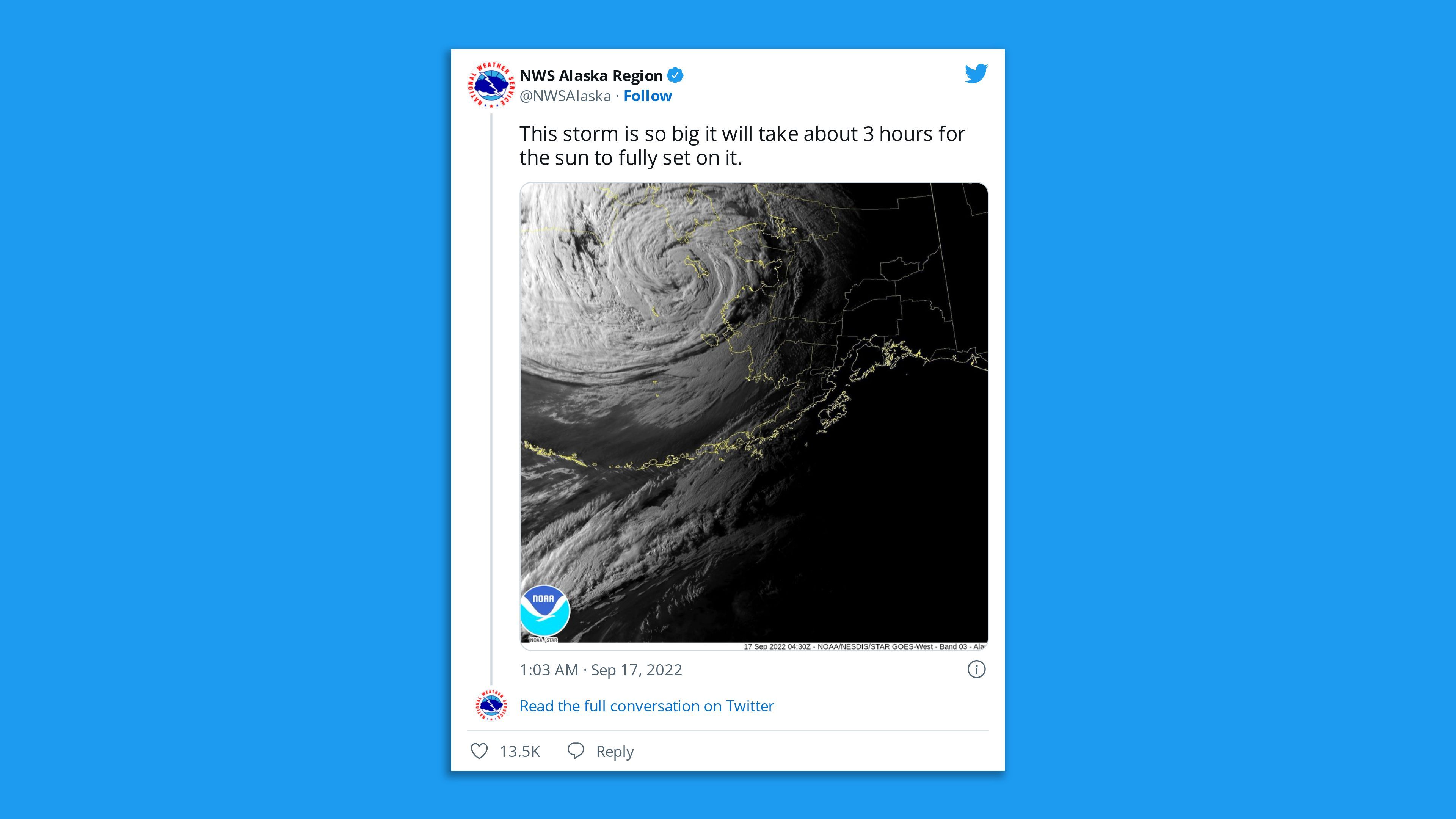Three blockbuster storms struck different coasts this weekend, causing widespread damage in Puerto Rico, Alaska and Japan.
The big picture: Each storm either exhibited unusual characteristics in its formation and intensification or in its interaction with built infrastructure.
- Their damage offers examples of what we can expect more of in a rapidly warming world.
In Alaska: The most intense storm ever recorded in the Bering Sea during the month of September blasted communities across a 1,000-mile stretch of Alaska's western coastline with hurricane-force winds and record storm surge flooding.
- The villages hit include names familiar to the climate community for being vulnerable to erosion and seeking to move to higher ground, such as Kivalina and Shishmaref.
- Severe flooding was also seen in Nome, the endpoint of the Iditarod sled dog race. The flooding there beat any seen since November 1974.
- By battering already vulnerable coastal communities, the storm will make them more susceptible to the Bering Sea's notorious winter storms.
In Puerto Rico: Hurricane Fiona struck on Sunday, causing an island-wide blackout that illustrates the country's challenges with repairing its electrical grid in the wake of Hurricane Maria in 2017.
- Hardening infrastructure against increasingly potent extreme weather events is a major challenge facing the U.S.
- At one point Sunday evening, nearly the entire island was under a flash flood warning, with "catastrophic" flooding underway.
In Japan: Typhoon Nanmadol, the country's fourth-most intense typhoon to make landfall, struck the island of Kyushu on Sunday morning eastern time.
- The storm dropped more than two feet of rain in 24 hours on parts of that island, threatening to cause landslides, along with wind and storm surge flooding.
- Climate change is enabling hurricanes and typhoons to dump more rainfall and stay stronger further north.
- Prior to its landfall, the storm had rapidly intensified — a process with climate change ties and reached Category 4 intensity.
Zoom in: The Alaska storm has the clearest links to climate change from a physical science standpoint, scientists told Axios.
- The storm evolved from Typhoon Merbok, which underwent an unusually rapid and explosive transition process over the North Pacific into a storm that feeds off jet stream energy.
- Scientists told Axios the storm's formation, transition and impacts have global warming ties.

Between the lines: The typhoon formed unusually far to the east, over anomalously warm waters, said Rick Thoman, a climate scientist at the University of Alaska at Fairbanks, via email.
- It then passed over record warm waters in the North Pacific, which injected more energy.
- "This is surely a climate change connection," Thoman said.
- Brian Brettschneider, a climate scientist based in Alaska, said such intense, out-of-season storms may become more frequent as climate change progresses.
- Scientists have long warned that rapid Arctic warming, with melting permafrost, sea level rise and longer ice-free seasons would imperil Alaska's coastal communities.
- Shaktoolik, an Iñupiat community of about 320 people, lost its protective berm, leaving them fully exposed to future storm surge flooding.
- "We're pretty heartbroken," the mayor told Alaska Public Media News.
!["[T]he First and Fifth Amendments Require ICE to Provide Information About the Whereabouts of a Detained Person"](https://images.inkl.com/s3/publisher/cover/212/reason-cover.png?w=600)






